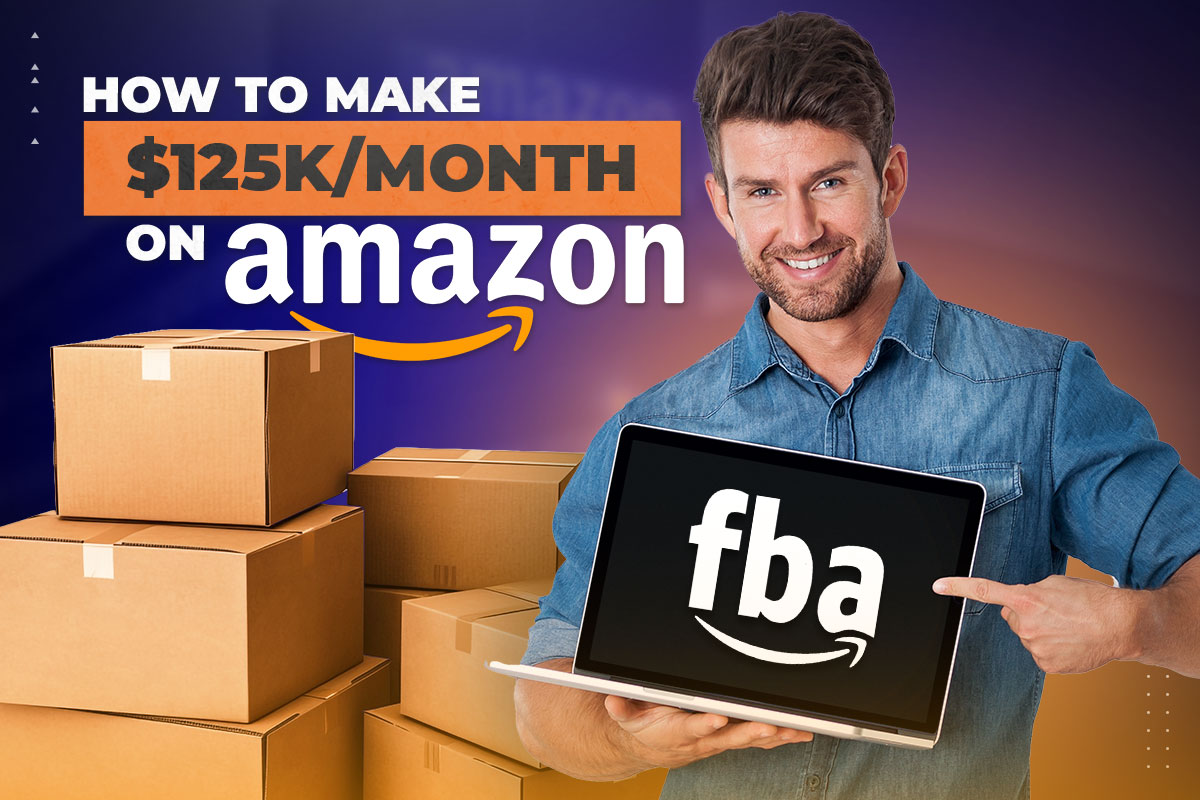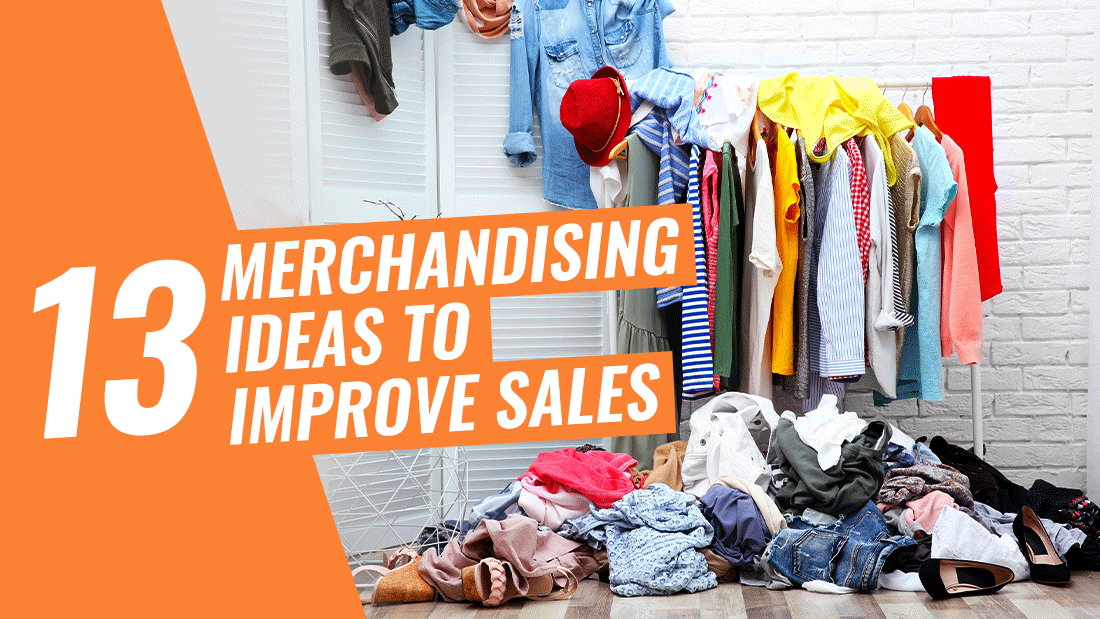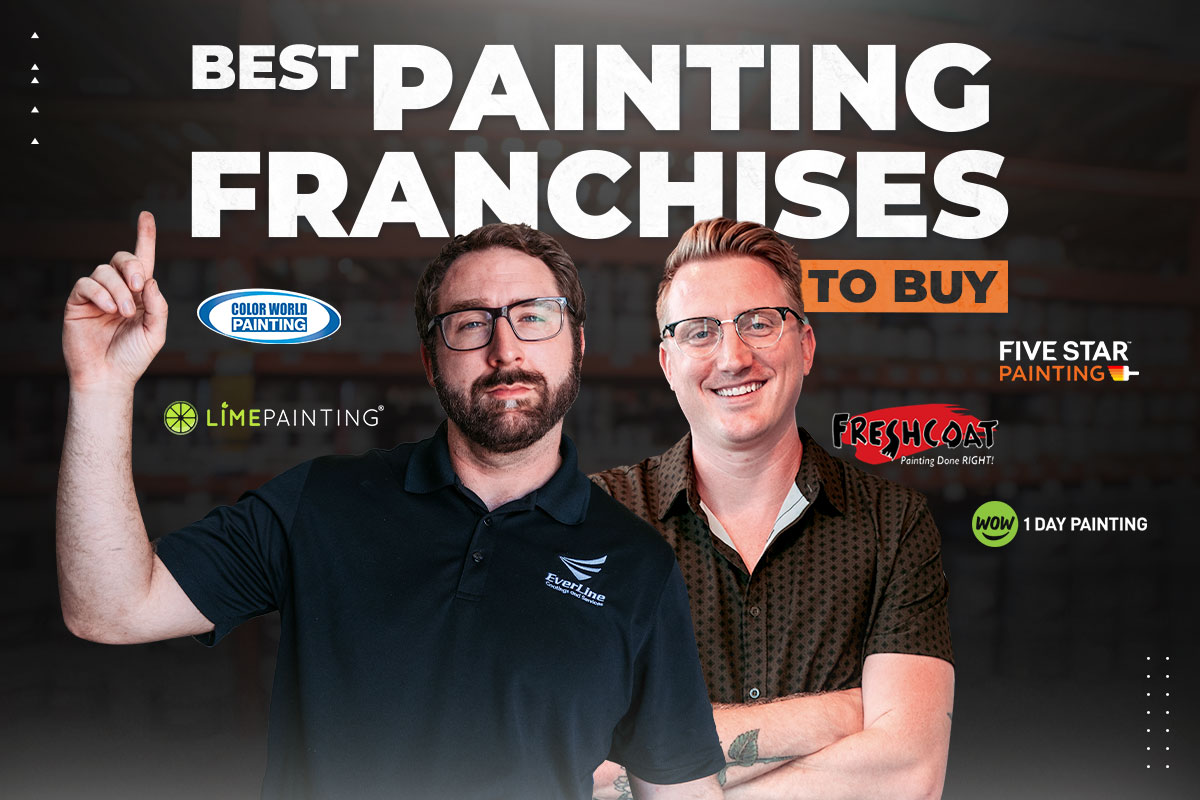Selling on Amazon is a lucrative field, and there are so many ways to create an Amazon store and generate sales. An Amazon FBA business is one of the most popular because it saves 70% on shipping and qualifies for Amazon Prime.
We talked to leading pet supplies seller Casey Walters to learn how he started Shed Defender. He later appeared on Shark Tank and is currently making $1.5 million in yearly revenue.
You’ll find out the strategies he uses in his Amazon store, why he encourages Fulfillment by Amazon (FBA), and how to get reviews without violating the Amazon seller agreement.
You don’t have to be a marketing genius to start selling high-quality products on Amazon. You just need to follow the strategies professional sellers use to simplify their business operations and increase profit margins while selling online.
Keep reading or click on any of the links below to jump that section:
Get ready to sell on Amazon!
Amazon FBA Seller: Shed Defender
Casey Walters started Shed Defender to protect his friends’ couches from his dog’s shedding. He told us:
He appeared on Shark Tank and is currently making $1.5 million in yearly revenue. Today, Shed Defender makes two-thirds of their revenue from selling on Amazon FBA.
Hear more in our exclusive interview:
How much money do you need to start selling on Amazon?
Jungle Scout, a leader in Amazon analytics, found that most new sellers start selling on Amazon with less than $5K. This amount covers product costs, Amazon fees, and other required expenses.
Is it good to sell on Amazon with FBA?
Selling on Amazon is highly beneficial to new businesses. Some of the advantages of becoming an Amazon seller include the ability to:
- Increase sales
- Spend less
- Simplify operations
- Grow your business
Want to know how? Let’s take a closer look at each.
Increase sales
Casey used Fulfilment by Amazon to deliver orders with the speed and reliability of Amazon Prime. Customers love the speed of delivery, which will help you increase sales and encourage repeat purchases.
In fact, Casey sells twice as many products on Amazon as he does on his own website. That means he’s earning an extra $100K per month!
Spend less
When you sell on Amazon, you can have Amazon manage your shipping. Amazon gets huge discounts because of its purchasing power and delivery network. That’s why FBA saves 30% off standard shipping and up to 70% on premium shipping options.
Simplify operations
Selling on Amazon FBA means Amazon handles payment and order processing, customer inquiries, returns, and reviews. This model frees up your time to focus on product development, marketing, and customer service.
Grow your business
Selling on Amazon gives you access to a global network with hundreds of fulfillment centers to sell products globally without figuring out the logistics on your own.
How to Sell on Amazon

Starting an Amazon business has never been easier. There are so many ways Amazon sellers can launch a new business venture. Simply follow this easy 15-step process to selling on Amazon:
- Find your niche.
- Research products.
- Create a business plan.
- Identify product suppliers.
- Place orders.
- Create an Amazon seller account.
- Create product detail pages.
- Research the right selling price.
- Package items with care.
- Select a fulfillment method.
- Manage your inventory.
- Promote your products.
- Get product reviews.
- Optimize listings.
- Grow with tools.
Get ready to learn how to sell on Amazon.
Step #1. Find Your Niche
First, you’ll want to research which products to sell online. The best way to perform product research is establishing what kind of eCommerce store you want to be.
A good Amazon store offers something people will pay for. Make sure to choose something you enjoy. This way, you won’t mind spending your time becoming an expert on the subject.
Some of the most popular product ideas include:
- Games and toys
- Health and beauty items
- Household essentials
- Groceries and gourmet food
- Clothing and accessories
- Shoes
- Baby products
- Tools and home improvement items
- Pet supplies
- Sports equipment
- Patio and lawn items
Step #2. Research Products
Once you have an online business idea, you’ll want to establish its potential to grow into a profitable business. That requires market research. The key to selling on Amazon is offering high-quality products at a competitive price and markup to generate sales.
As a new seller, you need to be selective about what types of products you sell. You’ll want to look for products with these qualities:
- Physically small and easy to store
- Bulk purchasing options
- List price that’s at least two times the cost of the product, shipping, and storage
- Low competition
- High-quality reviews
- Ancillary products available to expand into later
It will be easiest for new FBA sellers to manage inventory if you only have a few items. Check out our blog about the best products to sell on Amazon.
Step #3. Create a Business Plan
Next, you’ll want to write a business plan that outlines your approach to selling on Amazon. Your business plan can be as straightforward or as complicated as you want it to be. Businesses with a plan have a 19% higher success rate.
That doesn’t mean you need to have everything figured out at the very beginning. Casey told us:
At this point, you’ll have a successful sales performance target, so it’s time to start finding the products to sell in your eCommerce store.
Step #4. Identify Product Suppliers
You’ll want to find manufacturers that can create the products you need and ship them to you. Look for quality vendors that won’t ship counterfeit products.
Check out Amazon Merch to see if they carry the products you want to sell.
Step #5. Place Orders
Once you’ve found a manufacturer or wholesaler for your products, it’s time to place an order and get the products shipped to you. Before you order, ensure the products aren’t on the restricted product list.
Alternatively, you may be able to have them shipped to an Amazon warehouse. However, you’ll probably want to check your products to ensure they meet quality control standards before shipping them to the Amazon warehouse (especially if you’re just getting started).
Next, it’s time to start your Amazon Seller Account.
Step #6. Create an Amazon Seller Account

All Amazon sellers will need an Amazon seller account before they can open their Amazon store and create product listings.
You’ll also need to choose a selling plan. There are two options: individual and professional. The individual selling plan is free to start and costs $0.99 per item sold.
Meanwhile, the professional selling plan is $39.99 and offers lots of tools to boost sales and manage items in bulk.
Configure Your Account
To become an Amazon seller, you’ll need to configure your account following the steps below:
- Gather your personal and business information (including your bank account routing number and a credit card that allows international charges).
- Decide whether to apply for an individual or professional seller account.
- Enter your email address and password.
- Add your business location and type.
- Enter your personal and business details.
- Enter your payment method.
- Hover over the gear icon and click User Permissions.
- Enter contact information for new account users.
You can create your account using the email address associated with your Amazon customer account or set it up using a separate business email address.
Note that receiving approval to open an Amazon seller account can take a few days to a few months.
Enroll in the Amazon Brand Registry
You’ll want to enroll in brand protection through the Amazon Brand Registry. If you have a trademarked brand image, Amazon will help protect your brand’s intellectual property and provide you with tools for a more creative brand experience.
Step #7. Create Product Detail Pages

You can create a product detail page once your Amazon account is set up. You’ll need a product detail page for each product you offer, but product pages allow for variations (i.e., different color and size combinations) on a single page.
Two of the most critical features of a product detail page include the photos and the text, which we’ll discuss next to help you create a beautiful Amazon store.
Take Good Photos
Many sellers emphasize the importance of beautiful pictures to help sell their products on Amazon and other eCommerce stores.
Amazon sellers should closely follow Amazon’s photo requirements to achieve the best results. Some types of products have additional requirements, but the main requirements are:
- Use a pure white background (255, 255, 255 is the color code if you do your own editing).
- Show the whole product.
- Fill 85% of the picture.
- Name the image the same as the product identifier for books and some other products.
- The long side should be between 1,000 and 10,000 pixels.
- Files should be JPEG (.jpg or .jpeg), TIFF (.tif), PNG (.png), or GIF (.gif) formats.
Any other photos should follow the exact technical requirements, but you’re not required to use a white background or the product identifier as the title. You can include videos, infographics, and models (except for babies).
Pro Tip: Review specific product category requirements before adding pictures to your product detail page.
Be Descriptive
An Amazon store with compelling titles and descriptions on the product detail page will have better product visibility. Both the title and the description should have relevant keywords to highlight the particular product features that Amazon shoppers are searching for.
Amazon allows up to 200 characters in the product title, so use them to target as many search results as possible. Shed Defender, for example, uses the following title:
Shed Defender Original Dog Onesie – Seen On Shark Tank, Contains Shedding of Dog Hair for Home, Car, Travel, Anxiety Calming Shirt, Surgery Recovery Body Jumpsuit, E Collar Alternative
Generally speaking, this borders on keyword stuffing, which is when you add many keywords to achieve better results through search engine optimization (SEO). Some search engines penalize pages in search results when you stuff too many keywords in a small space.
It seems to work alright for the Shed Defender Amazon Store, though. I’d be interested to see what happens with search results if they cut the title to Shed Defender Original Dog Onesie – Seen On Shark Tank.
Once you come up with a great product title, you’ll want to include the following information in your product descriptions:
- Sizes
- Colors
- Product category information requested by Amazon
- Bulleted list of the essential features
- Sizing guide to help people choose the right size for garments
- Answers to frequently asked questions
Pro Tip: Look at top-performing product pages in your product category to understand what they do. Then use Jungle Scout to research the keywords people are using to search for products in your category. You can also check search engine optimization tools like SurferSEO or Google Trends.
Step #8. Research the Right Selling Price
Amazon shoppers are going to compare prices and deals online. You should too.
A dynamic pricing tool is a cost-effective way to provide competitive prices. Amazon includes a built-in option with a professional selling plan, but you might want external dynamic pricing software that you can use on your own website.
These tools make it so that third-party sellers can match or beat the best pricing online. However, you need to include minimum pricing so that you don’t drop below the costs of replacing the product, Amazon shipping costs, and additional selling fees.
Step #9. Package Items With Care
Whether you’re shipping items directly to customers or to Amazon fulfillment centers, you’ll want to have the products in packaging that protects them from potential shipping damage.
Check out the Amazon Seller Guide sections below to learn more about how Amazon expects you to ship products that participate in Fulfillment by Amazon:
- Sending and replenishing inventory: This reference provides information on how to pack your items.
- Shipping and routing: This section summarizes packing expectations and expands on shipping requirements.
Step #10. Select a Fulfillment Method
You’ll need to select a method of fulfillment for each product. The primary options include:
- Amazon FBA (Fulfillment by Amazon)
- Self-fulfillment
- Dropshipping
- Amazon Merch
Let’s look at these various approaches to selling on Amazon.
Amazon FBA

When you start selling on Amazon with Amazon FBA, you must ship your products to an Amazon fulfillment center. We’ll discuss why you might want to use Amazon FBA and its associated costs.
When you use Amazon FBA, you benefit from Amazon Prime shipping, which means Amazon provides customer service and handles customer returns to Prime members. According to Statista, 71% of Amazon customers are Prime members. You’re also more likely to get positive reviews if you meet their expectations when you sell on Amazon.
The sales costs on Amazon start at $2.45 per item and increase based on the product type, weight, dimensions, and time of year. You will pay 1.5% to 8% more for holiday packing and shipping.
You’ll also pay for storing the products, which is substantially more during the holidays compared to the rest of the year.
| Month | Standard | Oversized |
| January to September | $0.78 per cubic foot | $0.56 per cubic foot |
| October to December | $2.40 per cubic foot | $1.40 per cubic foot |
Self-Fulfillment
Some sellers prefer to handle fulfillment on their own, especially if they profit from their website or run multiple product shipping businesses.
Self-fulfillment impacts both pricing and customer service, which can cause you to lose money when you sell. (It’s happened to me on a couple of products I tried selling before I created and started using various calculators for selling on platforms.)
Pro Tip: I strongly recommend seeking out the input of a shipping and fulfillment specialist before you try to sell this way. The decisions you make when you’re managing fulfillment can make or break the company.
Dropshipping
Dropshipping is similar to Amazon FBA, but a third-party fulfillment center or distributor will ship the product after you sell it on Amazon. You may have shipping delays when you sell using this method if there’s a lag between when the customer pays and when the dropshipper gets paid.
The main benefit of this strategy is that you don’t need as much inventory to sell on Amazon.
Amazon Merch
Amazon Merch is a print-on-demand service that allows you to sell on Amazon by submitting your designs for products. Every time you sell an item, Amazon prints the product, ships it, and gives you a royalty.
Multichannel Fulfillment
You can use Amazon multichannel fulfillment if your business model includes online sales on multiple platforms. You’ll benefit from the same benefits as FBA services, but the fulfillment fees will be different.
Storage fees work the same as the FBA program. Learn more about Supply Chain by Amazon.
Step #11. Manage Your Inventory

You’ll need to keep your inventory available when you sell on Amazon. This might mean ordering in bulk and having shipments sent to the nearest Amazon fulfillment center or staying updated on unavailable products through your dropshipper.
Pro Tip: You might need to invest in more sophisticated inventory management tools to update your channels’ inventory when you start selling on multiple sales channels.
Step #12. Promote Your Products
There are numerous ways to promote your products both on and off Amazon. You can use strategies like:
- Sponsored brand campaigns: Invest in pay-per-click (PPC) ads featuring your logo, headline, and multiple products. These ads appear on pages and inside mobile and desktop shopping searches.
- Stores: You can customize your Amazon store to highlight your brand, emphasize product listings or categories, and generate sales.
- Sponsored display ads: Amazon has a huge network of affiliate websites that earn a commission for advertising projects. Show ads on and off Amazon with display ads.
- Posts: Create content to help people understand your product listing. Then highlight it on your Amazon shop.
- Sponsored products: Show a specific product detail page when an Amazon customer searches for relevant keywords. These work similar to brand ads.
- Amazon Live: Create a video to highlight products and sell on Amazon.
Selling on Amazon has evolved to allow you to do most aspects of social media marketing and content marketing directly on Amazon.
Step #13. Get Product Reviews

Selling on Amazon requires positive reviews. The more positive online reviews you have, the better.
Amazon allows you to automate review requests, but be careful not to break their rules. If you need to solicit reviews for a new product, try Amazon Vine.
Step #14. Optimize Product Listings
We’ve already talked about Amazon SEO, but I can’t emphasize this enough. Consumer behaviors shift, and you have to adjust to them. Use the Amazon Seller app to track your sales and adjust product SEO when you see a drop in sales.
Step #15. Grow With Tools

Selling on Amazon comes with numerous benefits. Because it’s the largest eCommerce platform on the planet, they have many seller tools and thousands of approved service providers and partner apps to choose from.
Amazon Store FAQ
What is Amazon Prime Day?
Amazon Prime Day is an annual event when Amazon and small businesses offer special sales. Amazon Prime Day 2024 was on July 16th and 17th, but Amazon Prime Day 2025 hasn’t been announced yet. There are also Prime Bid Deal Days that occur separately from Prime Day.
When is Amazon Prime Day?
Amazon Prime Day is in July each year. Amazon also hosts days in October and November when the Amazon fulfillment network has sales.
What are Amazon selling fees?
Amazon sellers can pay either $0.99 per item sold or $39.99 per month to sell unlimited items. The monthly plan comes with many additional features.
How much do Amazon sellers pay for FBA?
An Amazon FBA business will be charged on a per-item basis for the fulfillment and support of each order. You’ll also need to pay for the average monthly storage space you use in Amazon fulfillment centers.
Fulfillment costs range from $2.29 per package to $194.95 + $0.19 per pound above 151 pounds. Exact costs depend on the size and weight of the package and whether the product is considered apparel.
An Amazon FBA business will also pay storage fees of $0.56 to $2.40 per cubic foot of space per month. The fee depends on the size of each product and whether storage is during the holiday season.
How to set up Amazon sponsored ads
Amazon sponsored ads are PPC ads that contribute to 30% of store sales. You can use them to market your product or brand. You’ll need to:
- Register for Amazon Ads.
- Choose which products to advertise.
- Name your campaign.
- Set a budget of at least $10 per day.
- Choose a duration for the ads to run.
- Choose a targeting setup. New users should allow automatic targeting.
- Monitor results.
- Optimize ads based on feedback.
How to increase eCommerce sales
Many eCommerce sellers use websites like Shopify that allow them to sell in Amazon stores, Etsy shops, and social media marketplaces. Using an omnichannel business model is a great way to get more customers while processing customer orders with a single back end.
Check out our Etsy Blueprint to find out how TagPup has sold over $3M in products on Etsy and Amazon stores.
How much inventory to send to Amazon FBA
Amazon doesn’t have a minimum amount of inventory you can ship to Amazon’s fulfillment network. Each type of item has a maximum quantity, and no box should be over 150 pounds. Amazing.com recommends storing between 300 to 500 items in Amazon warehouses when you first start selling a private label product.
The FBA cost does increase with the cubic feet you take up to fulfill orders. That means it’s better to only ship as much as you can sell in a month to keep your monthly fee to a minimum.
Ready to start selling on Amazon?
You now understand the key strategies to start selling on Amazon. It’s up to you to find the products you’re most comfortable selling.
Have you created an Amazon Store before? What parts of selling on Amazon did you find most challenging? Let us know in the comments.





